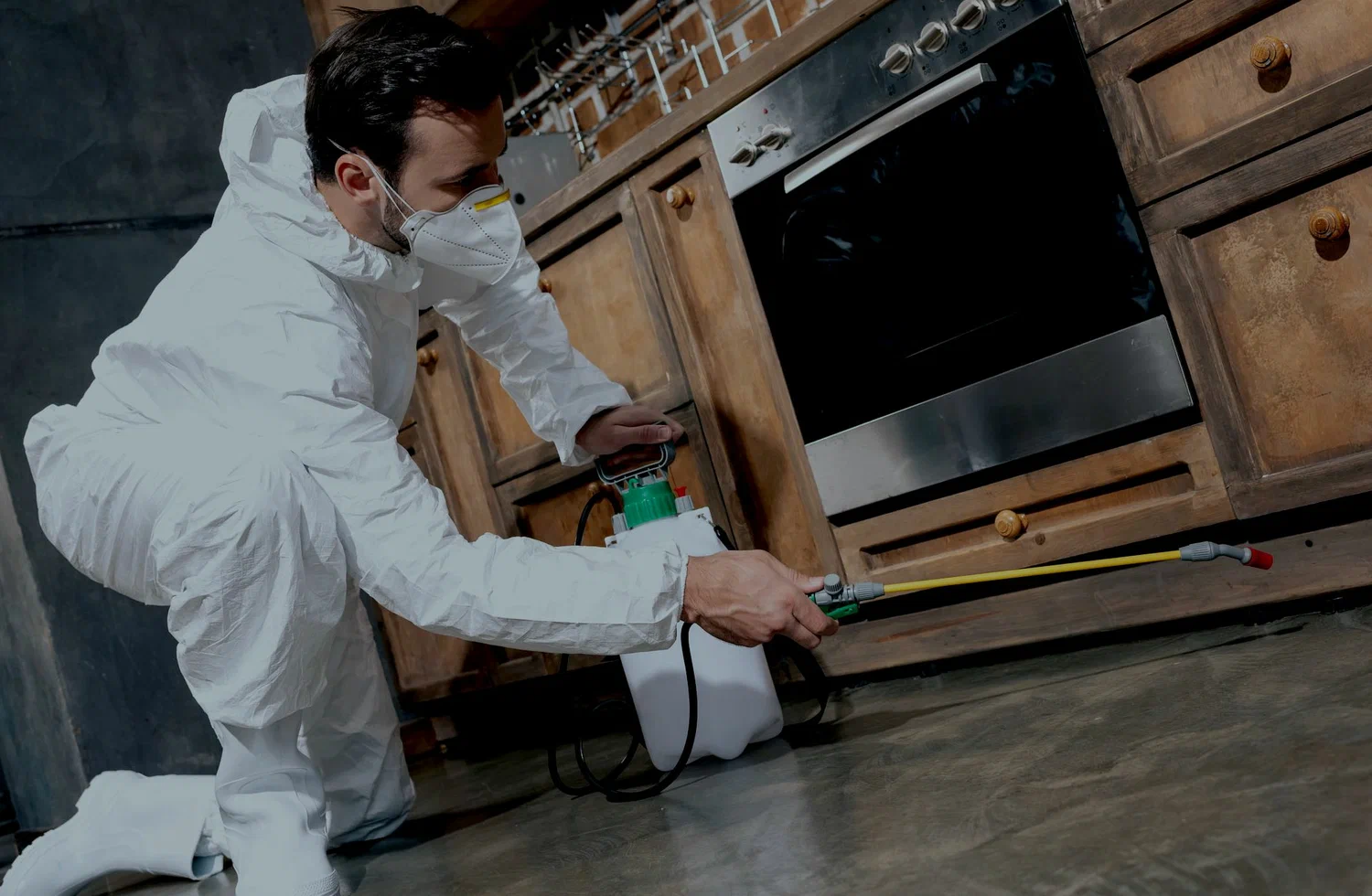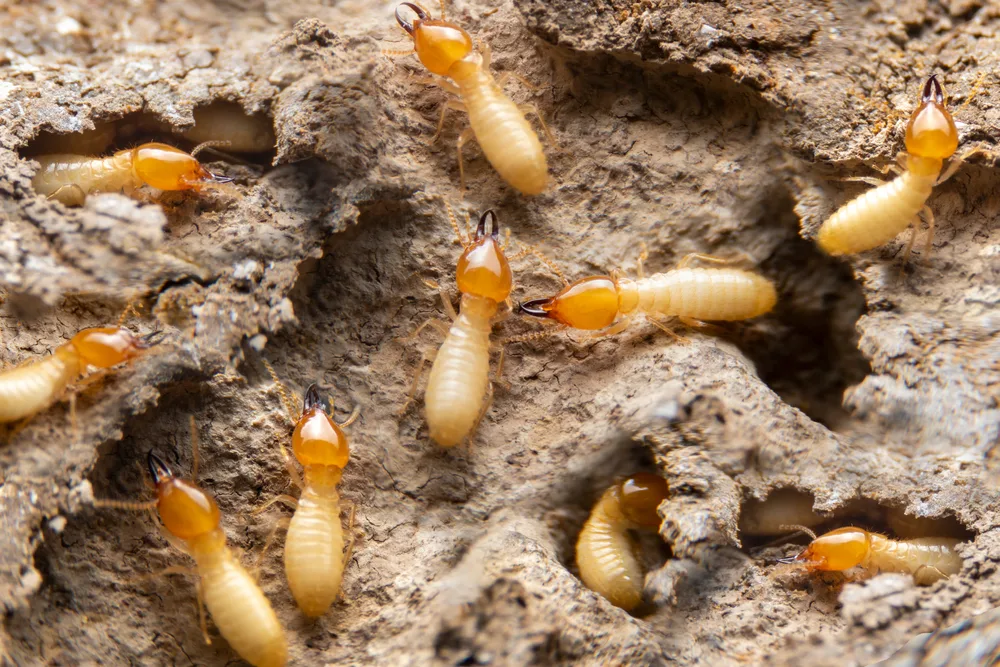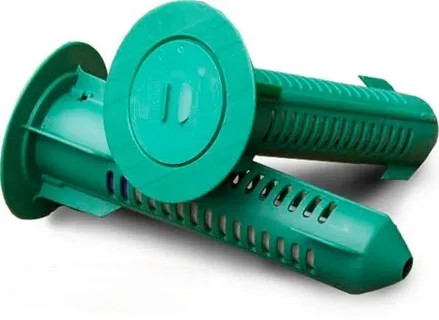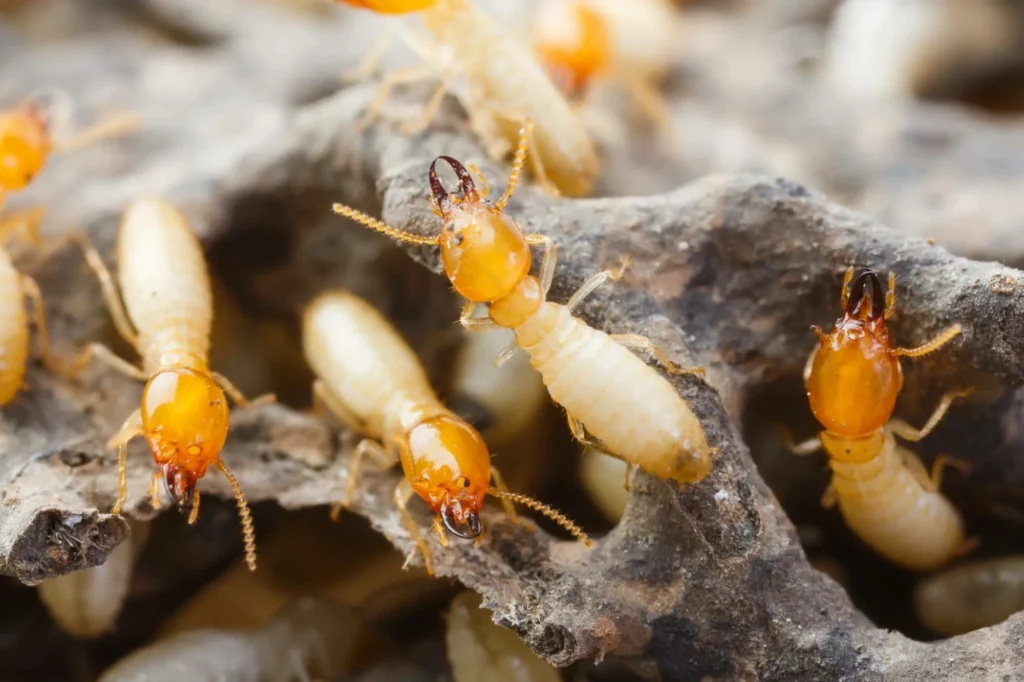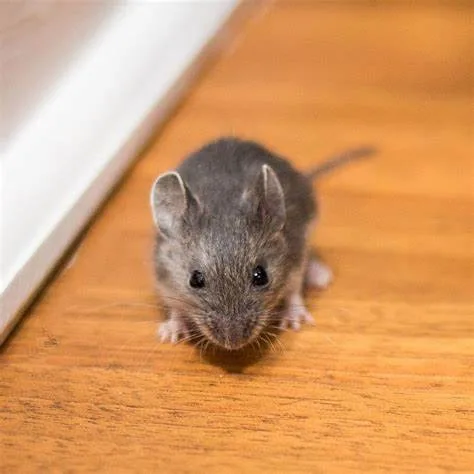Pest control is the regulation and management of species that are considered pests, which can adversely impact human activities or environments. It is a critical practice for protecting health, property, and overall well-being. Get Free Quote.
Contents
- Why pest control is essential
- What are the most common pests found in homes?
- How can I prevent pests from entering my home?
- What are some eco-friendly pest control methods?
- What are the environmental impacts of pest control methods?
- How do pest control services differ between residential and commercial properties?
- How do response times impact the effectiveness of pest control services?
- What are the health risks associated with pest infestations?
- What are the best methods to prevent pest infestations?
Why Pest Control is Essential
Health Protection
Pests can pose significant health risks by:
- Transmitting diseases like Lyme disease, West Nile virus, and salmonella
- Spreading pathogens through rodents, mosquitoes, and ticks
- Contaminating food sources and preparation surfaces
Property Preservation
Pest control helps prevent:
- Structural damage to buildings, especially wooden structures and electrical wiring
- Expensive property damage from termites and other destructive insects
- Contamination of belongings and living spaces
Types of Pest Control Methods
Pest management includes several approaches:
- Chemical Control: Using pesticides to eliminate pests
- Biological Control: Employing natural predators to manage pest populations
- Physical Control: Utilizing traps and barriers to prevent infestations
- Integrated Pest Management: A comprehensive strategy combining multiple approaches
Importance in Different Settings
Pest control is crucial in:
- Residential environments
- Commercial spaces
- Agricultural areas
- Food production and storage facilities
By implementing effective pest control, individuals and businesses can maintain a healthy, safe, and hygienic environment while protecting their property from potential damage and health risks.
What are the most common pests found in homes?
In Australia, the most common household pests include:
Top Household Pests
Most Prevalent Pests
- Rodents (mice and rats)
- Cockroaches
- Termites
- Ants
- Spiders
- Bed Bugs
- Fleas
Detailed Breakdown
Rodents
Rats and mice are the most common pests that pest controllers are called to address. They can cause significant damage by:
- Gnawing on wood and electrical cables
- Spreading diseases
- Contaminating food stores
Cockroaches
Australia has around 400 cockroach species, with several being problematic for homes. They:
- Thrive in subtropical climates
- Can enter homes through furniture, luggage, and small entry points
- Eat a wide range of foods and non-food materials
Termites
A critical pest for Australian homeowners:
- One in five Australian homes suffer from termite infestations
- Can cause significant structural damage
- Often remain hidden behind walls
Other Notable Pests
- Mosquitoes: Breed in stagnant water and can spread dangerous diseases
- Fleas: Often brought in by pets, thrive in warm, humid environments
- Silverfish: Damage books, photos, and paper products
Understanding these common pests helps homeowners take proactive pest control measures to protect their property and health.
How can I prevent pests from entering my home?
To prevent pests from entering your home, implement these comprehensive strategies:
Seal Entry Points
Structural Barriers
- Seal cracks and gaps around windows and doors using high-quality silicone or acrylic latex caulk
- Install door sweeps to block small openings
- Repair tears in window screens
- Use wire mesh to cover holes in crawl spaces, vents, and foundations
- Check and seal utility openings where pipes and wires enter the house
Maintain Cleanliness
Kitchen and Bathroom Hygiene
- Clean counters nightly
- Store food in sealed containers
- Avoid leaving dirty dishes out
- Clean bathroom surfaces weekly
- Keep drains clear and unclogged
Yard and Garden Management
- Eliminate standing water to prevent mosquito breeding
- Keep garden debris-free
- Water plants early to reduce moisture and fungal growth
- Maintain a clean outdoor area
Additional Prevention Techniques
- Inspect items before bringing them inside (luggage, firewood, plants)
- Use window screens and screen doors
- Regularly clean and inspect pet areas
- Manage garbage disposal promptly
- Reduce home clutter
- Consider installing retractable fly screens
By consistently applying these methods, you can significantly reduce the likelihood of pest infestations in your home.
What are some eco-friendly pest control methods?
Eco-friendly pest control methods offer effective ways to manage pests while minimizing environmental impact and health risks. Here are some of the most popular and effective eco-friendly pest control techniques:
Natural Repellents and Sprays
- Essential oils: Peppermint, eucalyptus, and tea tree oils can repel various pests.
- Citrus repellent: Lemon juice mixed with water acts as a natural spray repellent.
- Garlic and chili pepper spray: Blend garlic and chili peppers with water to create a potent insect-repellent spray for gardens.
Biological Control
- Attract natural predators: Plant umbelliferous flowers like yarrow, ammi, dill, and fennel to attract beneficial insects that prey on pests.
- Introduce beneficial organisms: Use ladybirds to control aphids or parasitic wasps to target whiteflies and caterpillars.
Physical Barriers and Traps
- Sticky traps: Use to capture crawling insects without chemicals.
- Live traps: Employ catch-and-release traps for humane rodent control.
- Diatomaceous earth: Sprinkle around plants to control slugs, snails, and beetles.
Plant-Based Solutions
- Neem oil: Apply as a spray to combat various garden pests.
- Companion planting: Grow certain plants together to deter pests, such as planting marigolds near vegetables.
Integrated Pest Management (IPM)
Implement a comprehensive approach that includes:
- Regular monitoring of pest populations
- Identifying and addressing root causes of infestations
- Using targeted, least-toxic treatments when necessary
Maintenance and Prevention
- Seal entry points in your home to prevent pest intrusion.
- Maintain cleanliness, especially in kitchens and bathrooms.
- Properly manage yard and garden areas to reduce pest-friendly environments.
By combining these eco-friendly methods, you can effectively control pests while protecting the environment and promoting a healthier living space.
What are the environmental impacts of pest control methods?
Pest control methods can have significant environmental impacts, ranging from soil and water contamination to disruption of ecosystems. The effects vary depending on the type of pest control used:
Chemical Pest Control
Chemical pesticides pose the most severe environmental risks:
- Contamination of soil and water sources
- Harm to non-target species, including beneficial insects like bees and butterflies
- Disruption of local ecosystems and predator-prey relationships
- Bioaccumulation and biomagnification in the food chain
- Development of pesticide resistance in pests
Biological Pest Control
While generally more eco-friendly, biological control can still have impacts:
- Potential disruption of local ecosystems if non-native predators are introduced
- Unintended consequences on non-target species
Physical Pest Control
Physical methods are often environmentally safe but may have limitations:
- Labor-intensive and potentially impractical for large-scale infestations
- May not completely eliminate pest problems
Integrated Pest Management (IPM)
IPM offers a more sustainable approach:
- Reduces reliance on chemical pesticides
- Promotes natural predators and biological controls
- Minimizes risks to non-target organisms
- Decreases pesticide runoff and soil contamination
The long-term environmental impacts of pest control include soil degradation, loss of biodiversity, and threats to key ecosystem services such as pollination. By adopting more eco-friendly and integrated approaches, it’s possible to manage pests while minimizing harm to the environment.
How do pest control services differ between residential and commercial properties?
Pest control services for residential and commercial properties differ in several key aspects:
Speed and Urgency
Commercial pest control services typically operate faster than residential services. This is because:
- Businesses can’t afford lengthy closures due to pest problems
- Commercial services aim for minimal disruption to operations
- Faster turnaround times are essential to prevent revenue loss
Scope and Customization
Commercial pest control:
- Requires tailored solutions for diverse industries (e.g., food service, healthcare, retail)
- Deals with larger spaces and more complex environments
- Often involves more extensive preventative measures
Residential pest control:
- Tends to be more standardized and consistent across homes
- Focuses on common household pests like ants, termites, and bed bugs
- Usually involves simpler, less frequent treatments
Types of Pests
- Residential properties often face issues with fabric-loving pests like bed bugs and termites
- Commercial buildings are more likely to encounter rats, cockroaches, and flies, especially in food service areas
Prevention and Monitoring
Commercial pest control typically emphasizes:
- Long-term preventative measures
- Ongoing monitoring to meet industry regulations
- More extensive pest management plans due to higher risk environments
Cost and Frequency
- Commercial services are generally more expensive due to the complexity and scale of treatments
- Commercial properties often require more frequent inspections and treatments
- Residential services are usually more cost-effective and less frequent
Regulatory Compliance
Commercial pest control must adhere to stricter industry-specific regulations, especially in sectors like food service and healthcare.
By understanding these differences, property owners and managers can choose the most appropriate pest control services for their specific needs.
How do response times impact the effectiveness of pest control services?
Response times significantly impact the effectiveness of pest control services in several ways:
- Customer Satisfaction: Quick response times enhance customer satisfaction and trust. In the pest control industry, the average response time typically ranges from 15 to 30 minutes for inquiries received via phone or online chat. A response time under 20 minutes is considered excellent and gives companies a competitive edge.
- Conversion Rates: Fast engagement with potential clients can boost the likelihood of turning inquiries into paying customers. This is particularly crucial in the service-oriented pest control industry.
- Pest Multiplication Prevention: Rapid responses are critical because pest problems can multiply quickly if left unchecked. For example, a single female bed bug can lay up to 500 eggs in its lifetime, and mosquitoes can lay hundreds of eggs every few days.
- Reputation Management: Prompt responses to pest sightings are essential for maintaining a positive business reputation. In fact, 56% of customers who see any type of pest are likely to post about it online via reviews, social media, or blogs.
- Lead Conversion: Studies have shown that faster response times increase the likelihood of converting leads into paying customers. This emphasizes the importance of prompt and proactive communication with potential clients.
- Operational Efficiency: Quick response times often correlate with improved operational efficiency. Companies that excel in areas such as service completion time and first-time fix rates can expect to see an increase in their customer satisfaction scores.
To improve response times and overall service effectiveness, pest control companies can implement strategies such as using automated responses, optimizing staff availability during peak hours, and utilizing Customer Relationship Management (CRM) tools to track and prioritize customer requests efficiently.
What are the health risks associated with pest infestations?
Pest infestations pose numerous health risks to humans, ranging from minor irritations to severe illnesses. The main health risks associated with pest infestations include:
Disease Transmission
Pests can carry and spread various diseases to humans, including:
- Lyme disease (from ticks)
- West Nile virus (from mosquitoes)
- Hantavirus (from rodents)
- Salmonella (from rodents and insects)
- Rat-bite fever (from rodents)
Allergies and Respiratory Issues
- Pests like dust mites, cockroaches, and rodents can trigger allergic reactions
- Common symptoms include sneezing, itchy eyes, and respiratory problems
- Pest allergens can exacerbate asthma symptoms, especially in susceptible individuals
Bites and Stings
- Mosquitoes, fleas, and bed bugs can cause itchy, painful welts
- Some spider and scorpion bites can be poisonous, potentially causing serious harm
- Bee and wasp stings can lead to severe allergic reactions, including anaphylaxis in some cases
Food Contamination
- Pests like flies, rodents, and cockroaches can contaminate food and surfaces with harmful bacteria
- This contamination can lead to foodborne illnesses and gastrointestinal problems
Psychological Impact
- Pest infestations, particularly bed bugs, can cause stress, anxiety, and insomnia
Secondary Infections
- Continuous scratching of insect bites can lead to secondary skin infections
By understanding these health risks, individuals can take appropriate measures to prevent and address pest infestations, thereby protecting their health and well-being.
What are the best methods to prevent pest infestations?
To prevent pest infestations, implement these effective strategies:
Seal Entry Points
- Inspect and seal cracks, gaps, and holes in walls, foundations, and vents
- Install door sweeps and ensure tight-fitting window screens
- Pay close attention to exterior doors, especially garage entries
Maintain Cleanliness
- Store food in airtight containers
- Keep trash cans tightly covered and remove garbage regularly
- Clean countertops, tables, and floors frequently to prevent crumb buildup
- Vacuum regularly to eliminate pests and their eggs
Control Moisture
- Fix leaking pipes, faucets, and appliances promptly
- Eliminate standing water inside and outside the home
- Keep areas dry, especially to prevent cockroach infestations
Landscape Management
- Trim trees and bushes away from buildings
- Consider using gravel or rock instead of wood mulch for landscaping
- Manage exterior factors to prevent pest hiding places
Regular Inspections
- Conduct routine inspections of your property
- Check for signs of pest activity, such as droppings or gnaw marks
- Respond quickly to any pest sightings
Additional Prevention Techniques
- Use pest control products like zappers and citronella candles for outdoor areas
- Inspect pets for fleas before they enter the home
- Reduce clutter to eliminate potential pest hiding spots
By implementing these methods consistently, you can significantly reduce the risk of pest infestations in your home or business.
Get Quote
Rayco Pest Control offers pest control and pest managerment services for residential and commercial environments. Contact us for a free quote.
Termite Pests in Australia
Termite Pests in Australia: Protecting Your Home from White Ants Australia is home to over 300 species of termites, with many posing a significant threat…
Termite Monitoring and Bait Stations
Termite Treatment for Perth WA
Termite Pests in Australia
Termite Pests in Australia: Protecting Your Home from White Ants Australia is home to over 300 species of termites, with many posing a significant threat…

